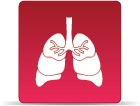Arsenic, Inorganic
CASRN 7440-38-2 | DTXSID4023886
On this page:
Noncancer Assessment
Reference Dose for Oral Exposure (RfD) (PDF) (6 pp, 433 K) Last Updated: 01/13/2025
| System | RfD (mg/kg-day) | Basis | PoD | Composite UF | Confidence |
|---|---|---|---|---|---|
| Endocrine, Cardiovascular | 6 x 10 -5 | Ischemic heart disease and type 2 diabetes (see Note) | See Note : | 3 | Medium/High |
Note: The RfD is based on two organ specific RfDs (osRfDs), which may individually be used in cumulative risk scenarios – (1) 0.058 µg/kg-day (5.8 × 10-5 mg/kg-day) using a composite UF (UFC) = 3, the osRfD for type 2 diabetes (based on a dose-response meta-analysis of four studies: Grau-Perez et al., 2017; James et al., 2013; Coronado-González et al., 2007; Pan et al., 2013) and (2) 0.057 µg/kg-day (5.7 × 10-5 mg/kg-day) using a composite UF (UFC) = 3, the osRfD for ischemic heart disease (both fatal and incident cases; based on a dose-response meta-analysis of five studies: Wade et al., 2015; Wu et al., 2010; Moon et al., 2013; Chen et al., 2013; James et al., 2015). See Sections 4.3.7, 4.3.8, and 4.6 of the IRIS Toxicological Review for more information. The RfD of 6.0 × 10-5 mg/kg-day is the rounded value of these two osRfDs.
Reference Concentration for Inhalation Exposure (RfC) (PDF) (6 pp, 433 K)
Not assessed under the IRIS Program.
Cancer Assessment
Weight of Evidence for Cancer (PDF)
(6 pp, 433 K)
Last Updated: 01/13/2025
| WOE Characterization | Framework for WOE Characterization |
|---|---|
| Carcinogenic to humans | Guidelines for Carcinogen Risk Assessment (U.S. EPA, 2005) |
- Bladder and lung cancer are acknowledged as known hazard outcomes for inorganic arsenic (ATSDR, 2007; ATSDR, 2016; Health Canada, 2006; IARC, 2004; IARC, 2012; NRC, 2013; NTP, 2016; WHO, 2011; WHO, 2011), and the strength of evidence for these health outcomes was considered robust (as described in Section 3.2 and Appendix A of the IRIS Toxicological Review). Bladder cancer and lung cancer were classified as carcinogenic to humans in the 1995 IRIS Toxicological Review based on epidemiologic evidence (U.S. EPA, 1995), and that classification is retained in the current assessment.
- This may be a synopsis of the full weight-of-evidence narrative.
Quantitative Estimate of Carcinogenic Risk from Oral Exposure (PDF) (6 pp, 433 K)
Oral Slope Factor:
32
per mg/kg-day
Extrapolation Method: Bayesian hierarchical dose-response meta-analysis using the logistic-power model.
Tumor site(s): Urinary, Respiratory
Tumor type(s): Bladder Cancer and Lung Cancer
Note: Cancer slope factor is a combined cancer slope factor representing the risk of developing bladder and/or lung cancer and was derived by combining the individual cancer slope factors of 17.6 per mg/kg-day (1.76 × 10-2 per µg/kg-day) for bladder cancer and 21.3 per mg/kg-day (2.13 × 10-2 per µg/kg-day) for lung cancer. Both individual cancer slope factors were derived from Bayesian dose-response meta-analyses of (1) eleven studies for bladder cancer (Chen et al., 2010; Steinmaus et al., 2013; Wu et al., 2013; Bates et al., 1995; Steinmaus et al., 2003; Bates et al., 2004; Meliker et al., 2010; Baris et al., 2016; Chang et al., 2016; Karagas et al., 2004; Michaud et al., 2004); and (2) six studies for lung cancer (Argos et al., 2014; García-Esquinas et al., 2013; Chen et al., 2010; Dauphiné et al., 2013; Ferreccio et al., 2000; Steinmaus et al., 2013). See Sections 4.3.5, 4.3.6, and 4.7 of the IRIS Toxicological Review for more information.
Quantitative Estimate of Carcinogenic Risk from Inhalation Exposure (PDF) (6 pp, 433 K)
Inhalation Unit Risk:
4.3
x 10-3
per µg/m3
Extrapolation Method: Absolute-risk linear model
Tumor site(s): Respiratory
Tumor type(s): Lung cancer (Brown and Chu, 1983a,b,c; Lee-Feldstein, 1983; Higgins, 1982; Enterline and Marsh, 1982)
Note: The 2025 iAs assessment focused on oral exposures and updated the previous RfD and oral slope factor, but did not update the existing inhalation unit risk (IUR). The IUR listed here (1995) remains in effect (https://iris.epa.gov/document/&deid=364455).
Chemical Documents
Jan 2025: IRIS Toxicological Review of Inorganic Arsenic (Final Report, 2025) (Report)
Nov 2024: IRIS Toxicological Review of Inorganic Arsenic (Interagency Science Discussion Draft, 2024) (Report)
Oct 2023: IRIS Toxicological Review of Inorganic Arsenic (Public Comment and External Review Draft) (Report)
Apr 2014: IRIS Toxicological Review of Inorganic Arsenic (Preliminary Assessment Materials, 2014) (Report)
Jan 2013: Inorganic Arsenic Workshop (Jan 2013) (Other)
Sep 2012: Inorganic Arsenic Meetings & Webinars (Sep 2012 - Jul 2019) (Other)
Feb 2010: IRIS Toxicological Review of Inorganic Arsenic (Cancer) (External Review Draft, 2010) (Report)
Jul 2005: IRIS Toxicological Review of Ingested Inorganic Arsenic (SAB External Review Draft, 2005) (Report)
Jun 1995: IRIS Summary of Inorganic Arsenic (Cancer, 1995) (Report) (Report)
Sep 1991: IRIS Summary of Inorganic Arsenic (Noncancer, 1991) (Report) (Report)
Other EPA Information
- Human Health Benchmarks for Pesticides (HHBP). This database provides human health benchmarks for pesticides that may be present in drinking water.
- Office of Pesticide Programs Pesticide Chemical Search. This database provides links to health effects information and registration status for pesticides.
- Chemistry Dashboard. This database provides information on chemical structures, experimental and predicted physicochemical, and toxicity data.
Related Links
Critical Effects
Tumor Sites
Chemical Structure

Synonyms
- Arsenic
- Arsenic, inorganic
- Arsenic, inorganic
- Gray-arsenic
- 7440-38-2




